Berrow’s Worcester Journal
- 16th March 2022
Berrow’s Worcester Journal is arguably the longest running continually published newspaper today, and many people come here to view old copies of the newspaper for all sorts of reasons. You can access copies on microfilm here going back to 1712, and we have bound volumes of the newspaper from 1712 through to the mid 19th century.
Stephen Bryan started printing the Worcester Postman in 1709. He used the name of a publication from 1690, which supported William and Mary. Originally it was aimed at gentlemen who wanted to know what was happening in London and around the world, along with prospect of trade, price of corn and local adverts. As time went on more local information was given, although people today are often surprised at how little local news was in early local newspapers. It’s thought people would know local events, so it was national events they concentrated on as well as the local adverts. People who come to view early newspapers can be surprised and frustrated that local news is limited!
Bryan had been an apprentice in London before coming to Worcester. He needed to live in Sidbury, outside the City walls, otherwise he would have needed to pay £20 to become a Freeman and be able to trade within the city.
The name changed to Worcester Journal, and was sold to Harvey Berrow. The success of the newspaper saw a competitor, called New Worcester Journal, published on Wednesdays, the day before the original Worcester Journal came out. So in 1753 it was renamed Berrow’s Worcester Journal to distinguish it, a name which it still carries.
In the first century and a bit stamp duty was paid upon newspapers, which was a big cost for the publishers. The abolition in 1855 encouraged bigger newspapers but also new titles. For the next 100 years there were various rivals including Worcester Herald, Worcestershire Chronicle, and Worcester Daily Times. Some of this was due to different pollical views of the newspaper, for instance Berrows Worcester Journal being Conservative, and Worcester Herald being published by those sympathetic to Whigs.
The mid 19th century also saw the creation of newspapers in other towns. So although Berrow’s covered the county there were new local titles. Evesham Journal, Malvern Gazette, Bromsgrove Advertiser and Kidderminster amongst others were founded. Some of these were published by the owners of Berrow’s Worcester Journal.
As technology changed and it was possible to include photographs in newspapers, decisions had to be made. Some changed their printing process and included photos within the newspapers. Berrow’s went down another route and produced a two sided A5 photo supplement, Berrow’s Pictorial Supplement, printed on better, glossier paper. It ran from 1909 to the early 1930s, after which photos were included within the usual paper. These volumes are also in our collections. The WWI years have been very heavily used, because they contain thousands of photos of soldiers who went off to fight. Photos would often be submitted when someone died too. During the centenary of the war many people used these, and we know quite a few people who found photos of relatives. Sometimes they are the only known photograph of an individual. We knew how valuable these would be so the 1914-18 editions have been digitised, and available on CD, and an index was created for these years which can be accessed online on our Collections page. 1914-15 index & 1916-18 index.
Within our Worcestershire Photographic Survey, which contains over 80,000 images, there are many from newspapers, including some from Berrow’s Worcester Journal.
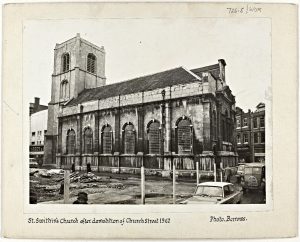
Photo of St Swithun’s from Berrow’s Worcester Journal and kept in our Worcestershire Photographic Survey
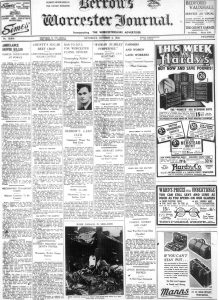
Berrow’s Worcester Journal following the bombing of Meco in Worcester. Due to wartime regulations this was not directly identified, just saying that a Midlands town was hit.
From the 1920s the number of newspaper titles declined, due to falling sales, with several merging, but Berrow’s survived and continued as a weekly paper. In 1987 it became a free weekly newspaper, mostly containing news already published in its sister paper, Worcester News. It still continues to bear the name that it has been published on for over 250 years.
Today it is still available here in the Self Service area in The Hive. It is mainly viewed on microfilm. Why microfilm and not the actual newspapers? Newspapers have mostly been printed on poor quality paper since most people don’t keep them – hence the saying ‘todays news is tomorrows chip paper’. If you leave a newspaper out in the sun for a while you’ll notice it will usually go stiff and brittle. Where old newspaper are used you’ll see the edges flake away, so most archives and local studies libraries mostly use microfilm which preserves the originals, and also means you don’t get dirty when you search them!
There are some online newspaper indexes, but unfortunately we are unable to provide free access to these so you would need to subscribe to one of these or pay to access them.
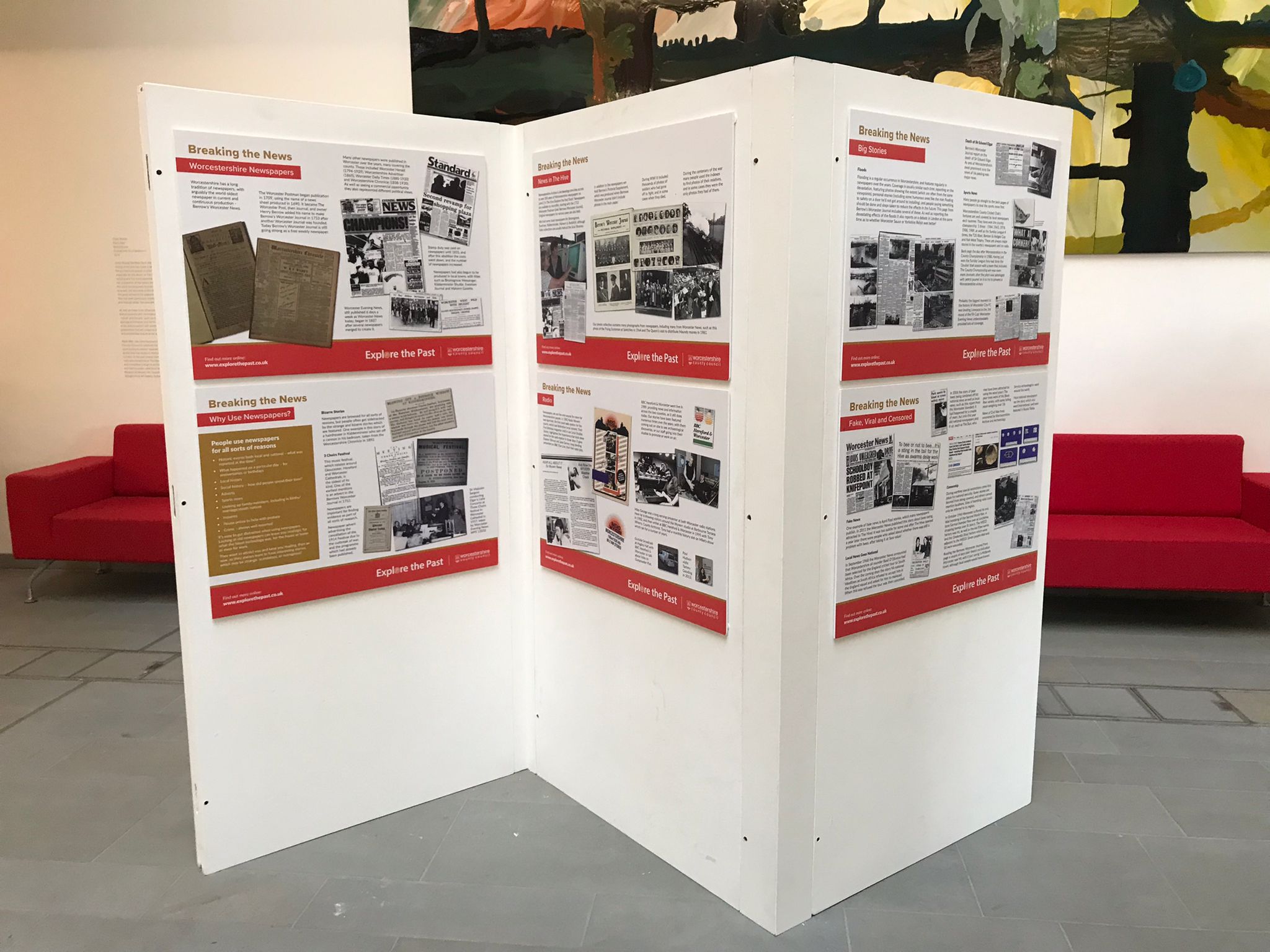
We recently supported a News exhibition in The Hive by a display about local newspapers and media. We put the content online so it was available long term.
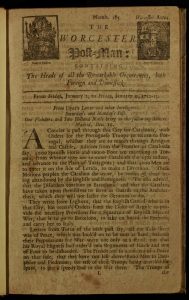
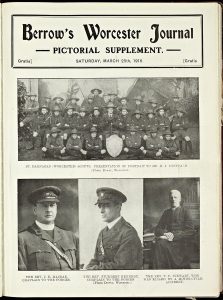
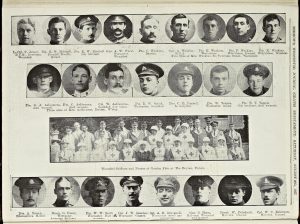
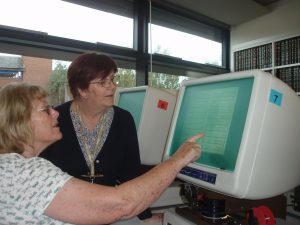
Very interesting. I think I will be able to find the information I need by visiting the Hive. At the least it will point me in the right direction.